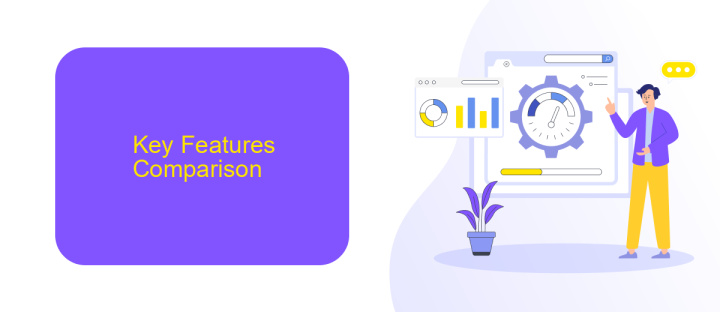Tibco Ftl Vs Kafka
In the rapidly evolving landscape of data streaming and real-time analytics, choosing the right messaging platform is crucial. This article delves into a comparative analysis of Tibco FTL and Apache Kafka, two leading technologies in the field. By examining their features, performance, and use cases, we aim to provide insights to help you make an informed decision for your enterprise needs.
Overview
TIBCO FTL and Apache Kafka are two prominent messaging systems used for data streaming and real-time analytics. Both platforms offer robust solutions for handling large volumes of data, but they cater to different use cases and architectural preferences.
- TIBCO FTL: Designed for low-latency, high-throughput messaging, ideal for financial services and other latency-sensitive applications.
- Apache Kafka: A distributed streaming platform known for its high scalability and fault tolerance, commonly used for log aggregation, real-time monitoring, and event sourcing.
Choosing between TIBCO FTL and Apache Kafka depends on specific business needs and technical requirements. For organizations looking to integrate these systems seamlessly, services like ApiX-Drive can facilitate the process by providing automated workflows and easy integration capabilities, ensuring that data flows smoothly between different platforms and applications.
Key Features Comparison

Tibco FTL and Kafka are both robust messaging platforms, but they cater to different needs and environments. Tibco FTL offers low latency and high throughput, making it ideal for real-time applications that require immediate data processing. It supports dynamic content-based routing and has built-in fault tolerance, ensuring reliable message delivery. On the other hand, Kafka excels in handling large volumes of data streams with its distributed architecture. It provides strong durability and fault tolerance through data replication and partitioning, making it suitable for big data analytics and event sourcing applications.
Integration capabilities also differ between the two platforms. Tibco FTL provides seamless integration with other Tibco products and third-party systems, enhancing its utility in complex enterprise environments. Kafka, with its rich ecosystem, supports a wide range of connectors and stream processing libraries, simplifying data pipeline creation and management. For those looking to streamline integration processes, services like ApiX-Drive can be invaluable. ApiX-Drive enables easy and automated connection between various applications and services, further enhancing the flexibility and efficiency of both Tibco FTL and Kafka implementations.
Architectural Differences

Tibco FTL and Apache Kafka are both powerful messaging systems, but they have distinct architectural differences that cater to different use cases. Tibco FTL is designed for high-performance, low-latency messaging, often used in financial services and real-time analytics. Kafka, on the other hand, is built for high-throughput and fault-tolerant data streaming, making it ideal for big data applications and log aggregation.
- Message Storage: Kafka uses distributed log storage, where messages are stored on disk and replicated across multiple nodes. Tibco FTL, however, focuses on in-memory storage for faster access.
- Scalability: Kafka scales horizontally by adding more brokers to the cluster. Tibco FTL scales through a combination of vertical and horizontal scaling, offering flexibility in deployment.
- Integration: Kafka has a rich ecosystem with connectors for various data sources and sinks. Tibco FTL offers seamless integration with other Tibco products and supports custom integrations via ApiX-Drive, which simplifies connecting various APIs.
In summary, Tibco FTL is optimized for scenarios requiring ultra-low latency and high performance, while Kafka excels in environments demanding high throughput and reliable data persistence. The choice between the two depends largely on the specific requirements of the use case, including latency, throughput, and integration needs.
Use Cases and Suitability

Tibco FTL and Apache Kafka are both powerful messaging systems, but they serve different use cases and have distinct suitability. Tibco FTL is designed for low-latency, high-throughput scenarios, making it ideal for financial services, real-time trading platforms, and mission-critical applications. Kafka, on the other hand, excels in distributed data streaming and is widely used for log aggregation, real-time analytics, and event sourcing.
In terms of use cases, Tibco FTL is often preferred in environments where performance and reliability are paramount. Kafka is favored in big data ecosystems where scalability and fault tolerance are critical. Both systems can be integrated with various services to enhance their capabilities.
- Tibco FTL: Financial services, real-time trading, mission-critical applications
- Kafka: Log aggregation, real-time analytics, event sourcing
For businesses looking to streamline their integration processes, services like ApiX-Drive can be invaluable. ApiX-Drive offers a user-friendly platform for automating data flows between different systems, enhancing the functionality of both Tibco FTL and Kafka by simplifying the integration process and ensuring seamless data transmission.
Conclusion
In conclusion, both Tibco FTL and Kafka offer robust solutions for real-time data streaming and messaging. Tibco FTL excels in low-latency, high-throughput environments, making it ideal for financial services and mission-critical applications. On the other hand, Kafka's distributed architecture and scalability make it a preferred choice for handling massive data streams and ensuring fault tolerance in various industries.
When integrating these systems into your existing infrastructure, tools like ApiX-Drive can simplify the process. ApiX-Drive offers seamless integration capabilities, allowing businesses to connect Tibco FTL or Kafka with other applications effortlessly. This ensures that data flows smoothly across platforms, enhancing operational efficiency and enabling real-time analytics. Ultimately, the choice between Tibco FTL and Kafka should be guided by specific business needs and technical requirements.
- Automate the work of an online store or landing
- Empower through integration
- Don't spend money on programmers and integrators
- Save time by automating routine tasks
FAQ
What are the primary differences between Tibco FTL and Kafka?
Which one is better for real-time data processing?
Can Tibco FTL and Kafka be integrated together?
What are the deployment options for Tibco FTL and Kafka?
How can I automate and integrate workflows between Tibco FTL and Kafka?
Time is the most valuable resource for business today. Almost half of it is wasted on routine tasks. Your employees are constantly forced to perform monotonous tasks that are difficult to classify as important and specialized. You can leave everything as it is by hiring additional employees, or you can automate most of the business processes using the ApiX-Drive online connector to get rid of unnecessary time and money expenses once and for all. The choice is yours!


